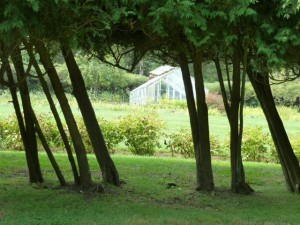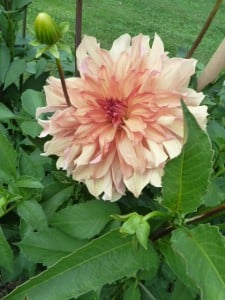
Located precisely on the dividing line between the states of New York and New Jersey is a greenhouse and gardens that helped shape American garden history. It is the garden of Helena Rutherford Ely at Meadowburn farm in Vernon, New Jersey. She was the much celebrated author of A Woman’s Hardy Garden, first published in 1903, and read by most American, and many British women gardeners of the time. It sold 40,000 copies and was reprinted 16 times before going out of print in 1930. Ely’s detailed practical advice helped convince a generation of gardeners to—among other things—abandon Victorian bedding schemes in favor of perennial plantings.
A Woman’s Hardy Garden was Ely’s first book, offering practical advice for novice gardeners written in an accessible and personal style. It extolled the benefits of physical activity for women and discussed the virtues of planting old-fashioned perennials. It was considered one of the most influential garden books of the day for novice gardeners. She would go on to publish two more books, and also wrote magazine articles for publications like Scribner’s. Her writing encouraged an amateur gardening fellowship among women, not surprising when one considers that Ely would one day become a founding member and Vice President of The Garden Club of America. She received fan mail and queries from fellow gardeners twenty years after her death. During her lifetime, Meadowburn was among the best known gardens in the country and served as a model for numerous others.

Following her death in 1920, the gardens receded from public view. They were maintained by the family that purchased the property from Ely’s son, who did not make fundamental changes, and continued to employ three generations of gardeners originally trained by Ely. But, in recent years the garden—once cared for by eight gardeners– had begun to decline. In 2011, several fortuitous events led to the discovery of the gardens by a young Longwood student in search of a thesis project. Since that time– in her care– the gardens have been undergoing a transformative restoration to their original grandeur. Someday soon, they may even be open to the public.
Four 12 x 75 foot perennial borders were a central feature, edged in box and featuring catalpa standards. Parallel borders of dahlias have been continuously replanted each spring and stored in the house each winter just as they were during her lifetime. They include many fine old varieties, including one lovely peach-colored flower aptly named “Mrs. Ely.”
Article copyright by Alice McGowan written for http://www.hartley-greenhouses.com


